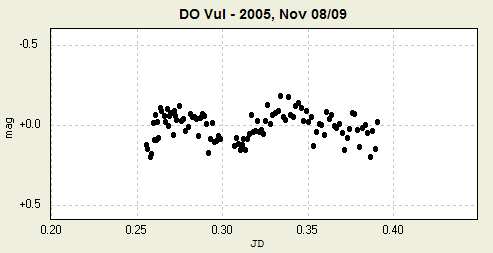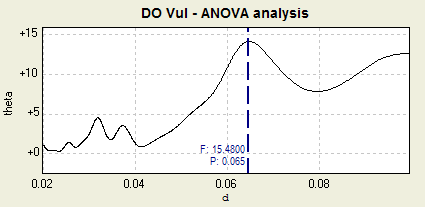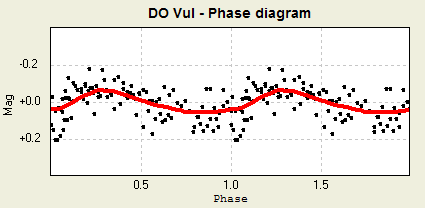DO
Vul : likely a new UGSU-type dwarf nova
On November 7th, 2005, Patrick Schmeer announced the
detection of a long outburst of the dwarf nova DO
Vul, based on CCD observations obtained by the Rigel
Telescope of the University of Iowa. Based on his
analysis, DO Vul was first seen at mag 15.3CR on Nov
2nd, 2005, and then gradually started to fade,
reaching mag 15.9CR by Nov 7th.
Following Patrick's announcement, I started an
unfiltered CCD photometry session on this target
(2005, Nov 08/09). The session lasted for 3.2h,
under transparent skies. I used a 0.35-m f/6.3
telescope and ST-7XME CCD. The resulting light curve
shows DO Vul at an average (unfiltered) magnitude of
16.9, dropping by 0.22 mag over the course of the
session.

DO Vul (unfiltered) light curve of
2005, Nov 08/09
A superhump-like modulation with an amplitude of
0.2 mag is visible in the light curve. Using Peranso's
ANOVA method, I find a best period of 0.065 +/-
0.006d. PDM, Lomb-Scargle and other methods yield
similar values. A Fisher
Randomization method, which calculates the false
alarm probability of the
quoted period, yields a very high significance for
the period.
Based on the above, the likelihood of DO Vul
being an SU UMa-type dwarf nova is considerable, but
more observations are required to confirm these
findings. Unfortunately, the present outburst seems
to be nearing its end.

ANOVA period analysis on DO Vul

Phase diagram resulting from
folding a period of 0.065d